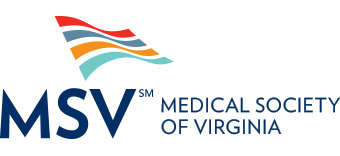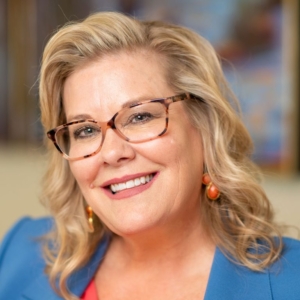Via chqdaily | by Deborah Trefts
During the worst of the COVID-19 pandemic, photos and videos circulated that revealed how healthcare workers were heroically striving to save lives, yet inadequately protected and stretched far beyond their capacities.
The pandemic has had a profound effect on the essential healthcare providers who have survived. The nurses, physician assistants, doctors, emergency medical technicians have endured, despite repeated exposure to a highly infectious disease — and to death and dying — during exceedingly long work shifts over an exceptionally prolonged period of time.
It is no surprise then that an epidemic of burnout and suicides has been plaguing healthcare professionals who not only risked their own lives, but also those of family members and friends, in order to treat and care for COVID-19 patients. They did so despite not having previously known most, if not all, of the patients under their care.
Thanks to the Medical Society of Virginia — headed by CEO and Executive Vice President Melina Davis — there is a way through this national epidemic, and she is keen to share it.
At 3 p.m. Saturday at the Hall of Philosophy, Davis will open the Chautauqua Women’s Club’s 2023 Contemporary Issues Forum series with “How to Save a Life: Leading the Revolution to Fix Our Broken Healthcare System.”
“Problems are solvable,” she said. “The first key is identifying what they are and bringing smart people to the table, which is what we did.”
Davis did not awaken one morning brimming with problem-solving savvy. She has honed this skill by immersing herself in foreign cultures; listening to, learning from and appreciating experienced mentors; taking calculated risks; and moving forward after inevitable moments of failure.
“I’m an embassy brat,” she said. “I grew up all over, but … Richmond (Virginia) is where I have lived the longest.” Based in Australia from ages 2 to 7, she moved with her parents to Washington, D.C. At 17, she accompanied her family to southeast Asia, including Thailand and Japan, for 20 months.
“I went over to Asia in a bubble and I came back with a soap box,” Davis said, “especially regarding women; it started me on a social impact bent.”
It was there that she “realized that while there are stark challenges negatively affecting people all around us, there are also solutions somewhere else that can be applied or designed by the willing, innovative and passionate.” Davis has been guided and motivated by this conviction ever since.
College came next. Her mother hailed from South Carolina, and she enrolled at the University of South Carolina while her parents continued to travel. Until she was 24, she visited them overseas.
“Thank goodness I had a good roommate and her family almost adopted me; the same of the dean of students,” Davis said. “I was so lucky. I always felt I had a couple of homes to go to.”
Academically, the University of South Carolina was a good fit for Davis because it was “building one of the most important programs for social work in the country.” She majored in international studies.
Professionally, the university afforded her the experience of leading a large organization. When she was just 19 and 20, she served as president of the Carolina Program Union.
The CPU focused on student issues and entertainment, and worked with the student government. She said she managed a budget of $1 million, chose the bands and speakers that came to campus, and learned how to use a computer.
Davis sought to “push and challenge” students by presenting them with engaging and timely issues and speakers. She met so many leaders – including Henry Kissinger and Sam Nunn – that she cannot name all of them.
“It was a great experience to be at every table,” she said.
Graduating a semester early, Davis moved to Northern Virginia, where her family had settled after returning from abroad. Although she tried to pursue a master’s in international development at American University, when her new husband got a job in Florida she moved there with him.
“I worked for United Way of Pinellas County, covering (St. Petersburg) and Tampa,” Davis said. “I met the most dynamic woman from Rhode Island, who taught me to fundraise. There are so many issues in the United States and I learned how United Way was trying to tackle them. There was a business mindset. … I was lucky to spend a lot of time with CEOs. This boss took me to their meetings.”
Consequently, Davis became “very good at raising money” and “learned to engage people where they were.”
After United Way in Richmond, Virginia – which was larger than that of Pinellas County – recruited her, she and her husband moved there in 1996. Eventually Davis became the head of marketing, and in 2000 she earned her Master of Business Administration at Virginia Commonwealth University.
“I could see where so many solutions could be applied … by design,” Davis said. “I believe that there is this beautiful, perfect space between smart business and harnessing people’s passion, (where you can) make a difference faster.”
Armed with her MBA and invaluable on-the-job experience, she has been “looking for solutions across the fence, between business and not-for-profits, and across different industries, and hopping back and forth between business and nonprofits” ever since.
“I care about finding solutions,” Davis said. “The nonprofit realm gave me a belief in the idea that nothing is impossible, whereas business people … have trouble getting out of their box. We swing for the fences.”
Interested in “testing (her) theories,” Davis “jumped over to run the National Multiple Sclerosis Society of Central Virginia.” She said that during her five-year tenure there, she tripled its revenue and doubled its membership.
“What an incredible organization doing terrific work; they know what they’re doing,” she said.
Recruited as the CEO of a newly established union of three struggling state organizations – the American Lung Association of the Atlantic Coast – she sought to “turn them around.”
When there was an opportunity to leave the ALA and move forward on an idea for a startup in the “microfinance space for fundraising for not-for-profits,” Davis co-founded PlanG Holdings.
Through PlanG’s unique platform – built on the “loyalty model” – nonprofits could use the internet and marketing to link major corporate brands with specific nonprofits that people care about.
“For example, if someone spends $100 at The Gap, it will give $5 to a nonprofit, such as my daughter’s school or the Girl Scouts,” Davis said.
Within six to nine months, about $7 million was raised from a diverse group of corporations.
“It was exciting; I learned a ton; I made a lot of mistakes; and I found that it took nine to 12 months to sell a company on the idea,” she said. “So, I ended up selling the platform, which was good, but I’m afraid I didn’t become a millionaire.”
“Failure teaches you a lot,” Davis said. “Make your mistakes small and make them fast. It requires a great deal of resiliency. You have to pick yourself up. Entrepreneurs are no joke.
“I know I wouldn’t be (at the Medical Society of Virginia) without PlanG,” she continued. “(Do) risk-taking with smart, risky moments. Try to go bold, but do it smartly, with good people around (you, and with) entrepreneurial spirit and innovation.”
At MSV, which Davis said is a combination of a for-profit, a non-profit and a holding company, she has tried to “get the most juice toward the mission.”
Recognizing an urgent need to protect and care for healthcare professionals confronting burnout and suicides of epidemic proportions triggered by the pandemic, she employed strategic visioning and collaborative approaches that led to the creation of a life-saving program in Virginia called SafeHaven™.
Now more than ever before, over the arc of one’s lifetime, the well-being of virtually everyone’s overall health — and that of their family and community — is substantially enhanced by the well-being of healthcare providers near and far.
If not for reasons of compassion and fairness, then for reasons of self-interest, “one good turn deserves another.” Throughout each day of the global COVID-19 crisis, many good turns have been done by healthcare professionals despite their suffering from ongoing pandemic-related pressures and haunting memories.
During her talk, Davis will point Chautauquans to SafeHaven’s unique program of reciprocity. Although it is designed primarily for the benefit of healthcare providers, its success is also a boon for their patients and communities.



